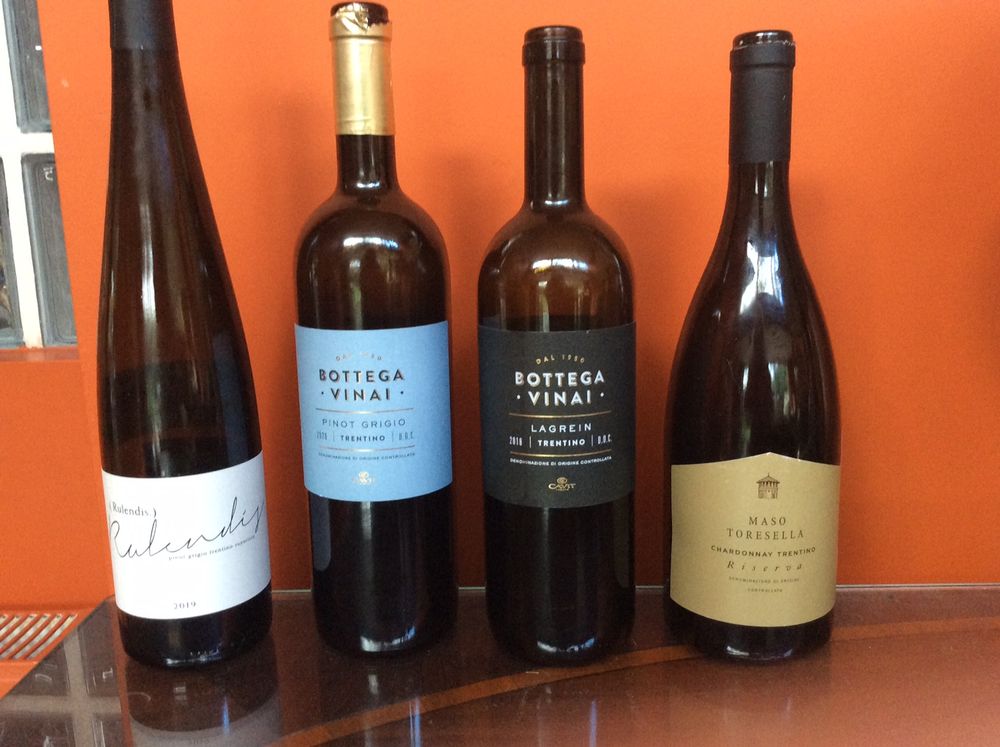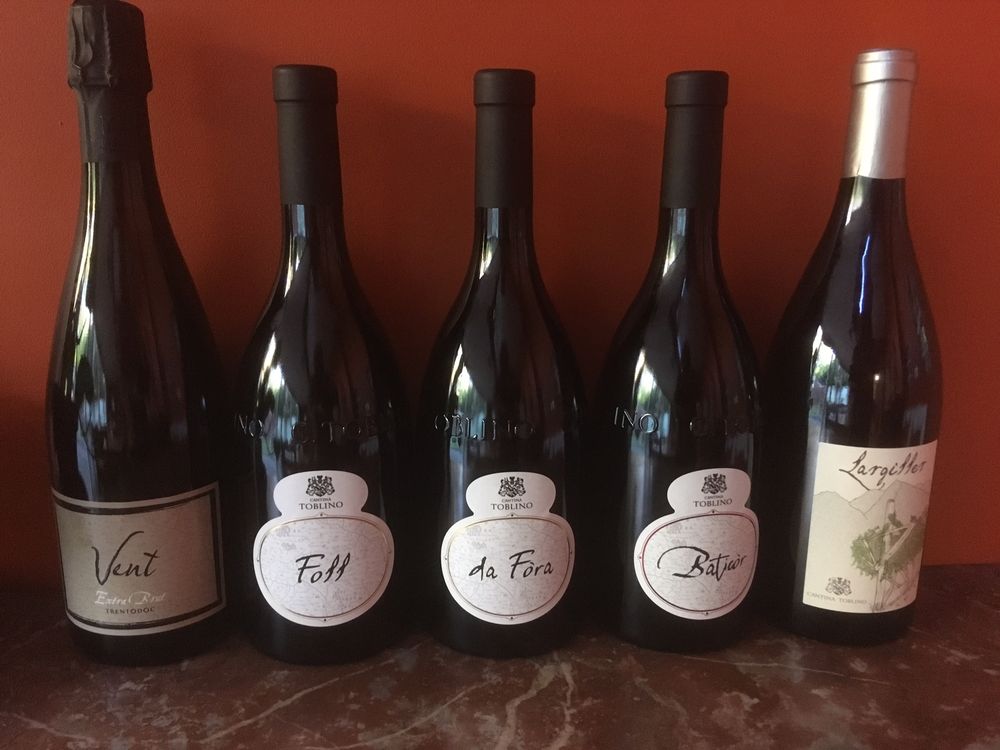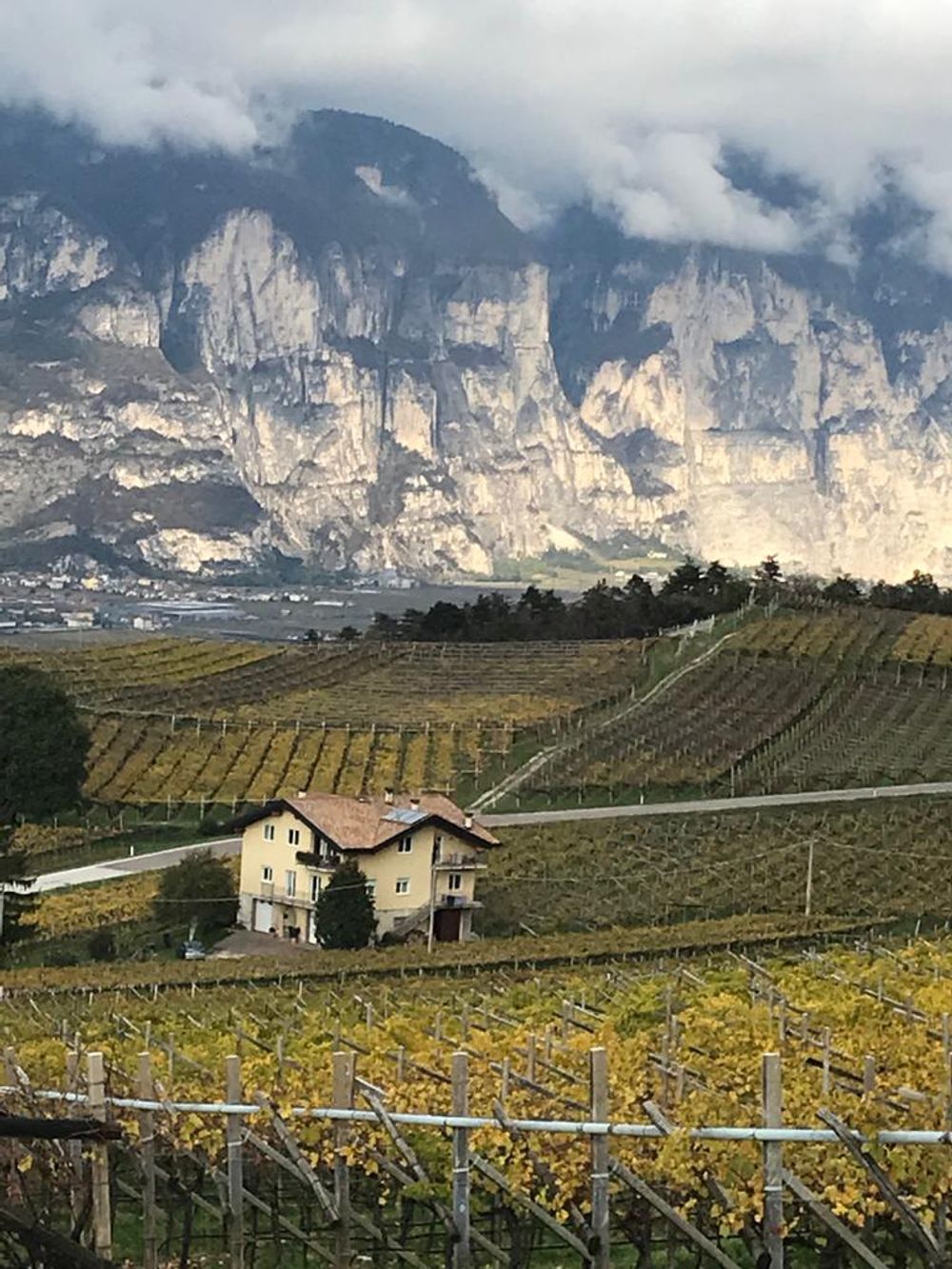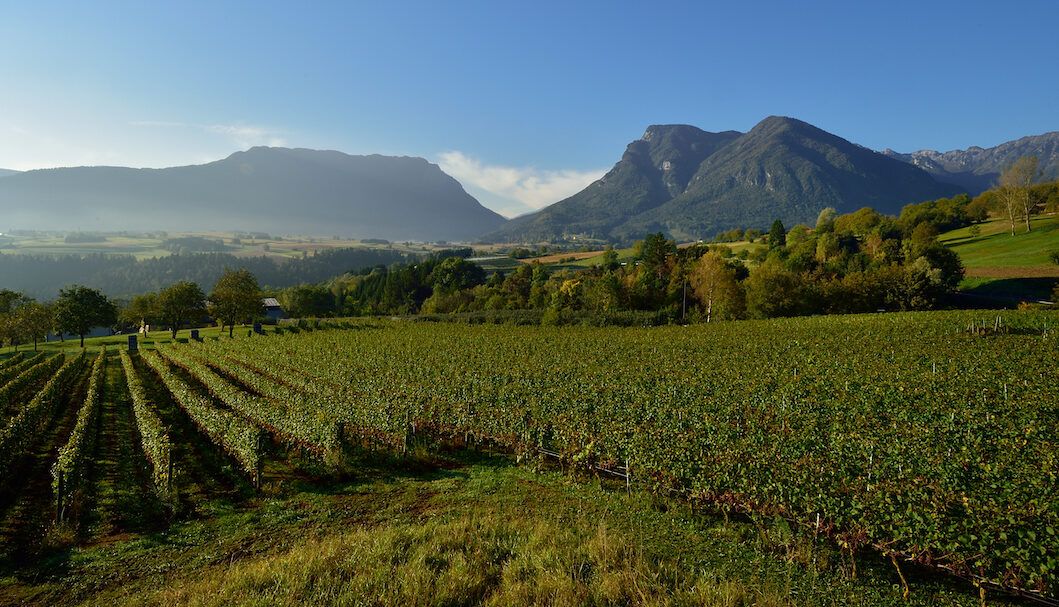Two key projects in Trentino are pushing the concept of terroir to new limits – Toblino Vent which is producing premium wines that reflect local terroir and soils; and PICA which is a software programme which allows winegrowers to site vineyards where it was never thought possible.
Northern Italy is no stranger to great wine cooperatives. The likes of Cantinas Tramin, Terlaner and Bozen dominate production in Alto Adige; Cantina Terre del Barolo and especially Produttori del Barbaresco continue to set the pace for quality Nebbiolo in Piedmont whilst Veneto’s great operations include Cantinas di Soave, di Valpantena and Negrar. But another less exalted region, Trentino, is home to two dynamic coops that are radically changing the face of winemaking here.

According to Daniele Cerneli aka Doctor Wine, whose Essential Guide to Italian Wine is one of my wine bibles the largest coop here, Cavit, isn’t just a “great cooperative” but what it produces is always “at least good and sometimes extraordinary.”
Which is remarkable when you think Cavit, which was established 1950, today accounts for some 75% of Trentino‘s wine production, or 62 million bottles, made from grapes bought in from 5200 growers and 11 associated wineries.
One of the main reasons is that over the past decade Cavit has been perfecting its secret weapon, PICA (Piattaforma Integrata Cartografica Agriviticola/ the Integrated Agricultural Mapping Programme), devised by Cavit’s Andrea Faustino, nicknamed ‘Papa Pica’.

Andrea Faustini
This high tech platform, which growers can download as an app, represents the ultimate appliance of science to the practice of planting vines, growing grapes and pretty much everything else viticultural.
PICA maps Trentino’s vineyard terrain, providing regularly updated vital information about everything from precipitation to altitude to soils. Instead of just drawing on past experience – their own or those who preceded them – winegrowers can make proper and informed decisions about where to grow what varieties, and how, what the irrigation patterns are, and many other things besides.
“PICA gives us a clear view of what we can handle in different parts of a vineyard, to see which area is best for which variety. It enables better and more efficient management all round,” says Fabrizio Marinconz, winemaker at Cavit.
Amongst Cavit’s own wines, PICA’s impact is most evident amongst the higher end wines, some of which were shown last week by the Cavit team to a group of journalists via Zoom.

And nowhere more so than in the two very different Pinot Grigios presented, the almost dry Bottega Vinai 2020 Trentino DOC and the dry Rulendis PG Trentino Superiore 2019. The former is made from two very different vineyards that together show great expression with sturdy acidity supporting good stone fruit and the wraparound creamy structure often characteristic of Trentino.
Rulendis – of which just 10,000 bottles are made in a typical vintage- couldn’t be more different. And that’s not just because of the Alsace-style bottle.
“These grapes came from plots above 600m which were long thought to be unsuitable for grapes. This wine has great intensity and complexity and really shows the extraordinary potential of PICA,” says Marinconz.
PICA’s influence can also be seen in Cavit’s other icon wine, the Brusafer Pinot Nero 2018, made from hillside fruit grown on Mount Baldo and around Povo in the Vallagarina Valley. Although still very young, this has a remarkable bright intensity with red and black berry fruit and herbal notes supported by firm acidity. This will age well as will the Maso Toresella Chardonnay 2017 which comes from Cavit’s prized “experimental” Maso Toresella vineyard in Valle dei Laghi; the wine has 10 days of skin contact before six months in barrique and a further six in bottle, pre-release. Spicy warm oak helps create a deliciously complex wine, evolving in the glass to show elegance but also power and character.
The influence of Lake Garda – Cantina Toblino
Just 22 kilometers away one of Cavit’s associated wineries Cantina Toblino has also been making waves, thanks in no small part to PICA which, as with Cavit, has helped its winegrowers select the best sites, amongst other things.
Established ten years later than Cavit, in 1960, in Trentino’s stunning Valle dei Laghi (Valley of the Lakes), north of Lake Garda, Toblino today comprises over 600 winegrowers working over 800 hectares at a variety of altitudes with many different soil types. According to director Carlo di Biasi, this unique location allows the Cantina to grow a wide range of ambitious wines.
“Our proximity to Lake Garda means we are perfectly located for growing quality grapes. We get warm winds from the lake, cool winds from the Dolomites, less extremes of weather and no risk of spring frosts.”
Toblino’s main Trentino DOC range shows good expression of what Trentino can do, with the current 2020 vintages of Gewürztraminer and Kerner (a northern Italian crossing of Trollinger and Riesling) showing very well amongst the whites; aromatic and showing good fruit supported by balanced acidity, these are good value. Of the reds the Schiava 2019 – a light, slightly scented variety that was once the most widely planted grape here – and the Lagrein 2020 showed particularly well; more challenging, for me at least was the Rebo 2020, a Trentino blend of Merlot and Teroldego – very dark and quite tannic, this lacked the mid-palate that would have bought the fruit flavours to the fore.

The Toblino Vent project
Decent though these are, the big quality event since 2016 is Toblino Vent, a project launched by and maintained by agronomists and oenologists, creating highly expressive quality wines that really reflect local terroir and soils and enhancing them by careful use of French oak barrels and terracotta amphorae.
“The project started in the vineyard, focused on the best vines. Proximity to the lake is important, as are our soils, which together create a cocoon in which we can let Mother Nature do as good a job as possible,” says di Biasi, who presented the wines on Zoom before Christmas to a select UK audience.
Of the six wines we tasted, two are Chardonnay (one a Trentodoc – a sparkling Traditional Method wine made only with Trentino grapes), one Pinot Nero and two from local varieties Manzoni Bianco and Nosiola, officially not a Vent wines but a Selezioni made with the same mind-set. A delicious Vino Santo made from 100% Nosiola was wine Number six. Toblino Vent volume is tiny, especially for a cooperative; total production of the six wines is under 60,000 bottles, of which one third is of the Trentodoc.
Vent is already gaining a reputation as one of Italy’s more interesting wine projects. Presented in hefty weighty bottles that would appal those concerned about carbon footprint these are, however, wines that almost shout to be taken seriously.
First off, Da Fora 2018. Made from Manzoni Bianco, a Venetian crossing of Pinot Bianco and Riesling, this has been grown in Trentino since the mid 1990s and here shows really well, rounded, spicy fruit supported by good acidity.
Next, Foll 2018, a really well made and fully balanced wine showing great expression from grapes grown in sand and gravel soil; there is an ethereal lightnesss here which di Biasi says reflects the cooling winds from Lake Garda. A great Chardonnay.
Baticor 2018 is 100% Pinot Nero, something of a work in progress although Toblino say the style is an emulation of Martinborough, NZ with lots of herbal complexity showing amidst the dark berry fruit.
Di Biasi and his team saved the best and most complex wine to last, the Largiller 2013. Made from 100% Nosiola, Trentino’s only autochthonous variety, this delicious rounded white spent over seven years of ageing before being released last year, to near unanimous praise.
“This wine is unique, you cannot compare it to anything in the world. This represents the best this territory can produce, it is our crown jewel, with fantastic ageability, says di Biasi, who adds that in an ideal world you would leave 12 bottles in the cellar and open one each year to check its evolution. If only.

Proof of Trentino’s growing importance
For consumers though, the best news about these wines is that they are proof that the combination of PICA and ambitious and thoughtful winemaking is putting Trentino onto the map as never before. Previously associated with often unambitious Pinot Grigio – alongside interesting indigenous varieties such as Lagrein and Marzemino – the region once seen as the lesser part of Trentino-Alto Adige is today more confident, and stylistically more defined.
For Toblino’s brand manager Giovanni Luigi Brumat, it’s not before time. He argues that the wines of Trentino and Alto Adige/Sud Tirol could not be more different, with the latter reflecting more extreme weather conditions (Bolzano can reach 40 degrees Celsius in summer whilst sometimes being freezing in winter) and very different soil and topography.
“If you were to taste wines from the two regions together you would imagine they come from places miles apart rather than from areas geographically adjacent,” he says.
Marinconz points to the growing popularity of sparkling Trentodoc, cheaper than Franciacorta but increasingly focused on quality, suggesting that in time these sparklers could give serious competition to the Lombards. His Altemasi Millesimato 2017, 100% Chardonnay is quite frankly one of the best sparkling wines I’ve tasted for a long time with fantastic length, reflecting the time spent on lees but also the high quality of the hand-harvested grapes, grown on sites with altitudes ranging from 450-700m, all selected via PICA.
Cantina Toblino’s Vènt 2017 is also impressive. Showing great purity of fruit and good balance, it has great richness reflecting the 36 months spent on the lees. Like the Altemasi, really quite delicious.
“We’re never going to be like Prosecco but global warming is opening opportunities for Trentodoc. With all the improvements in quality and now also increasing quantity, I believe it will become an increasingly important denomination. It will take time, of course, but we will get there,” says Marinconz.
With Trentodoc as its international calling card, supported by Cavit’s PICA wines and Toblino’s Vent, the future for Trentino – until now in many ways one of Italy’s forgotten wine regions – has never looked brighter.
For more about Cavit’s PICA system click here
Cavit wines are imported into the UK by Boutinot.
Toblino wines are imported by Les Caves des Pyrenees and Hedonism.









































